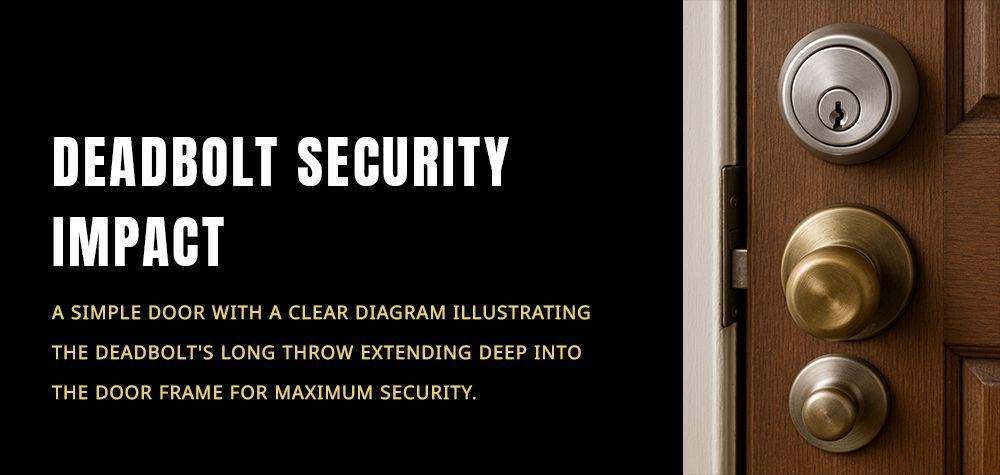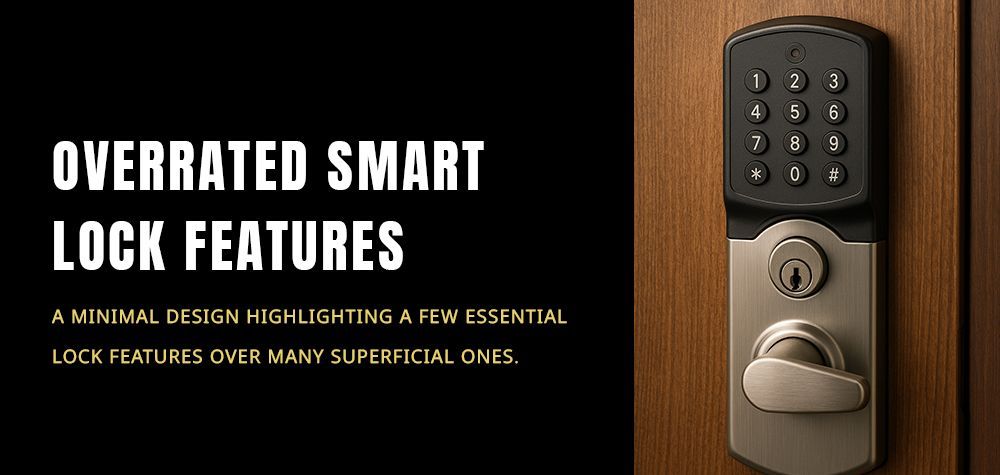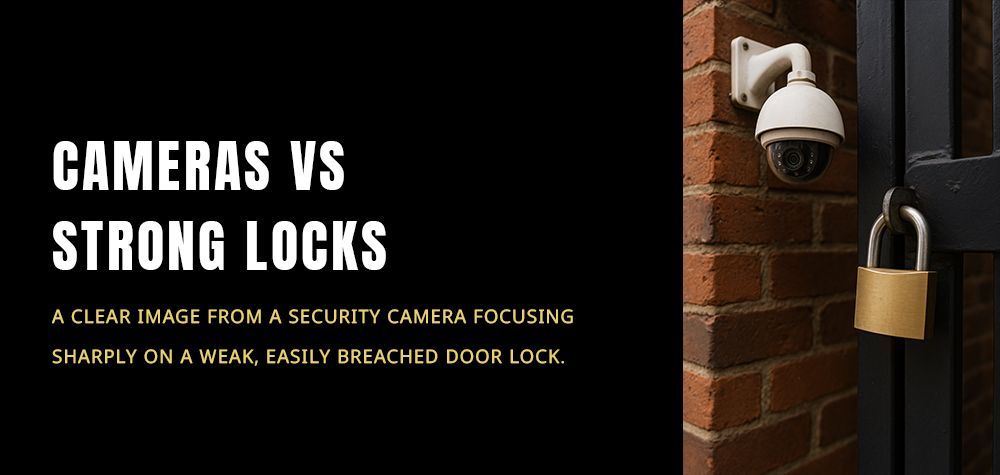Locksmith’s Guide to Securing Sliding Windows
Sliding windows bring in light, fresh air, and a sleek aesthetic to any room. But they also bring a hidden risk—one that many homeowners overlook until it’s too late. Unlike standard windows, sliding windows often rely on simple latches for closure, making them an easy target for break-ins if not properly secured.
As locksmiths know all too well, sliding windows can be a weak link in a home’s overall security. The good news? You don’t need to sacrifice ventilation or style for safety. With a few smart upgrades and a deeper understanding of how sliding window mechanisms work, you can protect your home from unwanted entry and keep your peace of mind intact.
In this locksmith’s guide, we’ll take you through the vulnerabilities of sliding windows, how to address them step by step, the risks of ignoring the issue, and practical, expert-backed ways to secure your home for the long haul.
How do door reinforcements work for added security?
Why Sliding Windows Are Often Overlooked in Home Security
Sliding windows are common in many homes, especially in kitchens, bathrooms, and ground-floor rooms. Their simplicity and ease of use make them a favorite for ventilation and visibility—but those same features can be exploited if the windows aren’t properly secured.
Unlike casement or awning windows that lock into the frame with a mechanical arm, sliding windows typically use a latch mechanism that can be jimmied open with a bit of pressure or a tool. And because they don’t open outward, there’s less friction or resistance to stop an intruder from sliding the pane open quietly.
The risk becomes even greater when windows are left slightly open for air. Without additional security measures in place, even a two-inch gap can be enough for someone to pry the window fully open from the outside.
It’s a quiet entry point. A vulnerable one. But it doesn’t have to stay that way.
Common Security Flaws in Sliding Windows
There are several factors that contribute to the security weaknesses of sliding windows, and most stem from design limitations rather than user error.
The most prevalent issue is flimsy locks. Many sliding window locks are built for convenience, not protection. They're often made of plastic or lightweight metal and can loosen or break over time. Worse, they can sometimes be forced open from the outside using nothing more than a screwdriver or coat hanger.
Gaps in the track are another vulnerability. If the window slides too smoothly or the frame is slightly off alignment, it may not close as tightly as it should. These gaps give room for tools to wedge in and manipulate the latch from the outside.
Then there’s the issue of false confidence. Many homeowners assume a locked window is a secure window, when in reality, most sliding window latches are more of a deterrent than a true barrier.
To truly secure a sliding window, you need more than the factory-installed hardware. You need strategy—and the right upgrades.
Step-by-Step: How to Secure Your Sliding Windows
Step 1: Inspect the Lock and Frame
Start by examining the condition of your current window locks. Open and close the window several times to test the latch. Does it stick? Does it click securely into place? If the lock feels loose or if the window can still move when it’s latched, it’s time for a change.
Next, look at the track and frame. Make sure the window fits snugly into the frame and there aren’t any misalignments. An ill-fitting frame can make even the best locks ineffective.
This initial inspection helps identify the baseline security level and any physical weaknesses that might need repair before enhancements are added.
Step 2: Add a Window Pin Lock or Auxiliary Lock
Standard latches are rarely enough. Installing a pin lock or an auxiliary locking mechanism gives your sliding window the kind of resistance that can deter forced entry.
Pin locks work by drilling a small hole through both frames of the sliding pane and the stationary one. A metal pin or bolt is inserted through this hole, effectively locking the window in place and making it impossible to slide open without removing the pin from inside.
Auxiliary locks, like double-bolt or keyed locks, attach to the frame and prevent sliding even if the latch fails. These are particularly effective for windows on the ground floor or those that face public walkways.
Installation is usually quick, and a locksmith can do it professionally if you're not comfortable with drills and screws.
Step 3: Install Window Security Bars or Rods
Security bars aren’t just for high-crime areas. They’re a practical and visible deterrent for any sliding window—especially if you want to keep a window cracked open for airflow without sacrificing safety.
You can place a removable metal rod or wooden dowel in the track behind the sliding pane. This physically blocks the window from opening beyond a certain point—even if the latch is broken or bypassed.
Make sure the bar fits tightly in the track and can’t be lifted out easily. Adjustable bars are ideal because they allow you to tailor the opening depending on your needs.
Step 4: Apply Window Sensors or Smart Alarms
For those who like tech-driven solutions, consider adding smart sensors to your sliding windows. These small devices attach to the window frame and alert your phone or alarm system when the window is opened or tampered with.
While sensors don’t physically block access, they offer the advantage of immediate awareness—especially if you’re away from home or asleep. Many systems are compatible with existing smart home hubs and can be easily installed with adhesive backing.
When combined with physical security upgrades, alarms add a psychological barrier for would-be intruders.
Step 5: Reinforce the Glass if Needed
Even with a strong lock, the glass itself can be a weak spot. If you live in a high-risk area or just want added peace of mind, consider reinforcing the windowpane.
You can use shatter-resistant security film, which holds broken glass in place even if it's smashed. This buys you time, creates noise, and discourages quick entry.
For maximum protection, some homeowners opt for laminated or tempered safety glass, which is harder to break than standard panes.
Risks of Ignoring Sliding Window Security
Failing to secure sliding windows can have real consequences—financially and emotionally. Many home break-ins happen through unlocked or weakly secured windows, especially those at ground level or hidden from street view.
And unlike doors, sliding windows can be opened with minimal sound or effort if the lock is compromised. An intruder can enter your home unnoticed, taking valuables, personal information, or worse.
But it’s not just about theft. Weak windows also pose a safety risk for children and pets, especially if located on upper floors. A window that opens too easily can be dangerous for curious toddlers or adventurous pets.
Securing sliding windows isn’t just about preventing crime—it’s about protecting everything you love.
Challenges and What to Do About Them
While securing a sliding window sounds simple in theory, homeowners often run into unexpected challenges along the way.
One common issue is compatibility. Not all security bars, pin locks, or sensors fit every window type. Custom-sized windows or older models might need modifications or specialty hardware. If you're unsure about compatibility, a local locksmith can help assess your options and suggest the right tools.
Another challenge is balancing ventilation and security. Many people like to keep sliding windows cracked open for fresh air, especially in mild weather. To maintain airflow without sacrificing safety, install adjustable locks or stoppers that allow limited opening but prevent full access.
And finally, budget constraints can get in the way. Fortunately, many of the most effective sliding window security upgrades—like dowel rods, pin locks, or security film—are inexpensive and easy to install without professional help.
The key is to start small and build your defenses one layer at a time.
Expert Advice: Locksmith Tips for Long-Term Protection
Seasoned locksmiths often recommend approaching window security in layers. It’s not about finding the one perfect lock—it’s about combining several methods to create a system that’s too time-consuming or noisy for any intruder to risk breaching.
Consistency is also vital. Don’t secure just one window and leave the others vulnerable. If one window is easy to open, that’s the one a criminal will target.
Experts also advise scheduling annual checks of your locks, tracks, and frames to make sure everything is still in working order. Weather changes and everyday use can loosen screws or warp materials over time, so a yearly inspection is a smart habit.
If you’re unsure whether your sliding windows are truly secure, book a consultation with a local locksmith. A short visit could make a world of difference.
Preventive Measures to Keep Your Windows Secure
Once your windows are properly secured, it’s important to maintain that security. Keep all window locking mechanisms clean and lubricated to avoid jamming or corrosion. Regularly inspect the tracks for debris or warping.
If you make renovations or move furniture near a window, recheck the locking devices afterward. Even a slightly shifted frame can throw off alignment and reduce security.
And finally, teach all household members how the security measures work—especially children or elderly family members. A secure home only stays secure if everyone knows how to lock up properly.
Conclusion: Don’t Let Sliding Windows Be Your Weakest Link
Sliding windows don’t have to be a vulnerability. With the right combination of physical locks, smart sensors, and ongoing maintenance, they can be just as secure as any door in your home.
It all starts with awareness. Once you understand how sliding windows are built—and where they fall short—you can take proactive steps to fortify them against intrusion.
Security isn’t about living in fear. It’s about feeling confident, knowing you’ve done everything within your power to protect what matters most.
So don’t wait for a break-in to take action. Secure your sliding windows today, and let the light in—without letting the danger in too.
Call Us Any Time!






